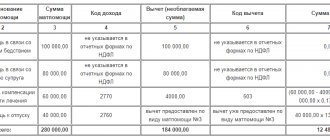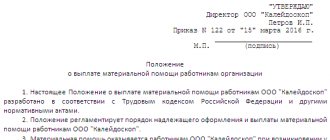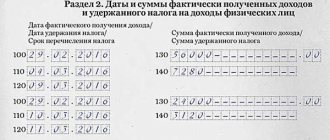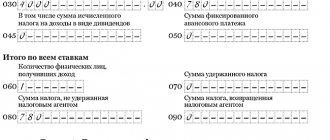Material aid. What it is?
There is no strict definition of the concept of “material assistance” by law. In general, we can say that material assistance represents some additional payments in cash or in kind to an employee due to his financial difficulties or certain life circumstances.
Since the necessity and obligation of such payments is not fixed anywhere at the legislative level, the employer decides independently whether he has the opportunity and desire to exercise this right. Cases in which an employee can count on financial assistance, its size and frequency of payments are reflected in the labor or collective agreement.
Financial assistance is provided to the employee on the basis of a written order from the director of the organization, in which the amount of payments should be clearly stated in order to avoid future misunderstandings with the tax authorities when checking the correctness of tax calculations.
In what cases is personal income tax withheld from financial assistance?
Despite the fact that amounts of money paid to citizens as social assistance are not earnings, they can be considered as income, and then the question naturally arises: is material assistance subject to income tax?
The tax burden procedure is determined by the Tax Code of the Russian Federation, which establishes that material assistance is subject to personal income tax, minus some cases mentioned in the law. Based on Art. 217 of the Tax Code of the Russian Federation, financial assistance is not subject to personal income tax if payment is made:
- In the form of a one-time participation (clause 8 of Article 217):
- from the company management to the relatives of a deceased employee or retired former employee, or to a member of the workforce or retired former specialist in connection with the death of a loved one;
- to the poor at the expense of the federal or regional budget;
- from the company to members of the workforce in connection with the birth of a child in the family, in an amount not exceeding 50,000 rubles.
- Charitable companies registered in accordance with the established procedure (clause 8.2 of Article 217).
- As financial support in connection with natural disasters to the victim or relatives of the deceased as a result of a natural disaster (clause 8.3 of Article 217).
- Victims of a terrorist attack or relatives of a person killed in a terrorist attack (clause 8.4 of Article 217).
- To a pensioner within the framework of the provisions of the law defining the procedure for receiving a one-time payment by citizens receiving a pension (clause 8.5 of Article 217).
Financial assistance received from an employer by a member of the workforce or a retired former employee is subject to personal income tax if during the tax period it does not exceed the amount of 4,000 rubles. (Part 3, Clause 28, Article 217): tax is collected from the surplus. Accordingly, from monetary support to 4,000 rubles. inclusive, income tax is not calculated.
General procedure for filling out personal income tax-6
From 2021, the duties of tax agents include submitting to the tax office once a quarter a calculation of accrued income to employees of the enterprise, withheld personal income tax amounts and transfers to the income tax budget (personal income tax form-6).
This form is compiled according to information from the enterprise’s accounting registers.
The calculation consists of 2 sections:
- "General indicators". This part of the report reflects the total amounts of income accrued to all employees, income tax withholding and transfers. The results are reflected on an accrual basis from the beginning of the year;
- “Dates and amounts of income actually received and personal income tax withheld.” This part reflects when income was received and tax was withheld, when it was transferred to the budget, as well as general indicators of income and tax payments for all employees.
There are differences in the rules for filling out these sections. So, in the first part, information is entered on an accrual basis. The second part reflects only indicators related to the last quarter. Therefore, the indicators in these sections may not match.
Financial assistance reflected in the report
The following types of financial assistance paid to employees are required to be reflected in the personal income tax-6 report:
- fully subject to income tax. Such amounts are reflected on line 20 of the report;
- fully or partially non-taxable financial assistance listed in Appendix 2. The amounts of such assistance should be indicated in line 20, and the part not subject to personal income tax - in line 30 of the calculation.
The following types of payments fall under the second paragraph:
| Type of financial assistance | Conditions for non-taxation of payments |
| Help for retiring employees | The annual payment cannot exceed 4,000 rubles |
| Help for the disabled | The annual payment cannot exceed 4,000 rubles |
| Assistance with the birth, adoption of a child, and obtaining custody rights | The annual payment cannot exceed 50,000 rubles. A prerequisite is the issuance of funds no later than 12 months after the occurrence of the event |
Financial assistance, tax-free in 2021 - amount, deduction code
Tax collections and deductions are an integral part of the large government mechanism in our country.
According to the basic law on profits, any person who receives a material benefit must report it to the tax office and pay the required fee.
This applies to both organizations and individuals. persons, the only difference is in the size of the rates and reporting periods.
However, there are a number of reasons why the state does not impose taxes on persons - this is the allocation of material assistance.
Important aspects
Most often, financial assistance is issued by the employer upon the occurrence of one of the important events in the employee’s life, due to his illness and the need for additional expenses, the death of a loved one, assistance to support the family at the birth of a child, and other emergencies.
It seems that everything is logical, and why not make a complete exemption for such cases, but in fact, the law provides only a certain amount for such purposes, above which the recipient will still pay taxes.
This situation is caused so that organizations or other entities do not use this opportunity for personal gain.
For example, transfer large amounts of money in order to be able to avoid paying government fees.
Also, for this rule, there are exceptional cases that allow the employer to accrue an amount exceeding the limit without paying personal income tax.
Such events include:
- the birth of a child in an employee’s family or the adoption of an adopted child;
- natural disaster causing harm to employees;
- assistance to the family of a former employee in connection with his death.
I would like to immediately note that the provision of financial assistance occurs exclusively on the personal initiative of the employer or the terms of the employment contract.
Many employees do not carefully read the terms of cooperation, although it may clearly indicate for what purposes they can receive assistance.
To receive assistance, an employee can independently apply for a job, however, the issuance of funds depends entirely on the decision of management.
The same applies to exceeding the amount required by law. If an employer wishes to help more than the amount established by law, he has the right to do so only if he pays tax.
If the boss wants to transfer assistance to himself, he must first ask the entire founders of the organization. It is permissible not to notify only in cases where this is prescribed in the charter.
When is it provided?
Help can be provided at the personal request of the boss or at the request of the employee himself. To designate a payment of financial assistance, the law stipulates that the event must correspond to a certain purpose: too joyful or too sad.
The full list of reasons to receive funds is presented below:
- Payments for an employee’s well-deserved vacation, anniversary, or other holiday.
- Significant events in the lives of subordinates, for example, a wedding.
- Death of an employee or a member of his family (parents, spouses or children, regardless of relationship, including adopted ones).
- Temporary financial difficulties.
- An emergency, such as a serious illness of a subordinate requiring urgent surgical intervention, etc.
- Natural disasters, fire, terrorist attack and others.
The frequency of payments also has limits. By law, assistance can only be provided once per year per employee, regardless of his or her incidents.
And when allocating it, the recipient of the funds must really have a purpose that allows the release according to the relevant case or event.
For this purpose, confirmations in the form of checks, certificates, certificates and other documents can be used.
When writing the reason, the employee has the right not to go into details, but only to indicate the main reason that gave rise to this request.
Financial assistance is issued in accordance with one order for this purpose per year, but its amount is subject to one-time assistance to the employee or divided into parts over 12 months.
Typically, financial assistance is tax-free if it does not exceed 4,000 rubles, and this amount is not reflected in the insurance premiums required to be paid.
According to the law, if the amount exceeds the available limit, it will be necessary to pay tax on the difference, with the exception of a deduction of 4 thousand rubles. This applies to types of assistance for vacations and weddings.
As for more serious events, such as the birth of a child, the amount can reach 50 thousand rubles without the need to pay tax, and such support will not violate the law in any way.
Let's look at an example - an employee received 2 thousand in a year when going on vacation in the form of assistance. Six months later, he was getting married, and his employer gave him another 3 thousand.
At the end of the year, the limit of allocated financial assistance was 5 thousand, which means that an amount of 1000 rubles will be subject to payment of a fee.
Taxable or not
Taxation directly depends on the case, because For each event, there is a different limit (4 thousand or up to 50).
When determining the amount to be paid, the period for issuing funds, which is 1 year, should be taken into account. For the case of providing assistance for the birth of a child, the maximum limit can reach 50 thousand. The same applies to a natural disaster.
If an employee is bereaved or his family members need funds due to his death, the amount of assistance provided has no limit and under no circumstances should it be taxable.
As for other reasons for receiving funds, their amount should not exceed 4 thousand rubles or the difference must be paid.
Payment procedure
Each enterprise maintains accounting records, and each employee has a deduction in the amount of 4 thousand from the beginning of the year to the end.
Based on the results, the amount that is subject to tax payment is calculated if the employee has exceeded the payment limit.
The employer is not obliged to encourage and show favor to the employee, unless otherwise provided by the labor or collective agreement, because the allocation of funds comes from the organization's budget.
A subordinate can independently express his request for payment by writing an application addressed to the manager, but the decision can be either approval or refusal.
Any allocation of funds must be documented. In other words, if you plan to submit an application, it must indicate the reason for the request and attach documents indicating the described need.
For example, at the birth of a child a copy of the birth certificate is attached, and at a funeral - a death certificate.
These papers are needed not by the employer, but by the tax service as proof of the allocation of targeted assistance.
If the request is approved, an order is issued, on the basis of which money can be received at the cash desk or by transfer. The boss can satisfy the request in full or issue the amount at his discretion.
It should be noted that other situations not covered by law will be subject to taxation, regardless of the amount allocated.
If it is in cash, the assistance is transferred through the cash register along with the upcoming salary payment or by issuing a separate cash order. In case of non-cash payment, it is transferred to the salary card.
What is the taxation?
Everything that the organization allocates in excess of the limits established by law will be subject to personal income tax.
To complete the reporting, you will need to fill out 2-personal income tax, indicating the amount of income received, exceeding 4 or 50 thousand rubles, depending on the case.
As a general rule, no matter what the organization’s taxation system is, the tax amount is calculated with the exception of the permissible limit on the allocated amount. However, the tax base remains the same.
The main thing is that when reflecting income in 2 - personal income tax and 6 - personal income tax there are no discrepancies in the amounts. In addition to the reports, documents must be submitted in the form of certificates of events that correspond to the purpose of allocating money.
The tax rate is determined individually, and is often 13% for residents. However, according to the general law, the size can be from 9 – 35%.
If the employee is not a resident, his rate will be significantly higher. When recalculating taxes, it is necessary to clarify the status of each employee at the end of the year, because this factor may change regularly.
As for insurance premiums, they are not calculated from the amount established by law. But from the limit exceeded, the contribution must be paid to the Social Insurance Fund, but only from the excess of the difference.
In accounting, the allocation of mat. The funds are classified as other expenses, where the debit is -91, the credit is 73 or 76, and then they make up the posting.
When the amount of assistance does not exceed 4,000 rubles
Separately, it is worth noting that when material assistance is exempted from income tax, the leading role is played not by the purpose of the payment, but by its amount. The legislation stipulates that in the case of payment of financial assistance in an amount not exceeding 4,000 rubles per recipient per year, income tax is not withheld from such income.
This could be a gift to an employee for some significant event or anniversary. The cases in which such assistance is provided to employees are determined at the discretion of the employer and are fixed in the local labor regulations of the enterprise, a collective or labor agreement.
But if financial assistance exceeds the threshold established by law, then the employer is obliged to withhold personal income tax from the excess amount.
For example, accountant Ivanova M.P. submitted a written statement to the director of the enterprise, in which she stated a request to provide her with financial assistance due to the need for treatment.
Are the payments one-time or monthly?
The grounds for accruing mat support may be the death of a family member, natural disasters, costs of treatment for an employee, harm to an employee as a result of terrorist actions, the birth of a child, marriage and other unforeseen circumstances specified in the enterprise’s employment contract.
Thus, financial assistance for vacation in the amount of 4,000 rubles. and less are not subject to contributions. From the amount of financial assistance over 4000 rubles. contributions (including “for injuries”) must be calculated in the general manner.
Keep in mind that if you, as an employer, transfer certain payments to employees for good work and call them financial assistance in the order, then both tax authorities and representatives of extra-budgetary funds will probably recognize them as labor payments, from which you will have to pay both personal income tax and contributions.
Material at the birth of a child or his adoption. The legislation sets a limit - no more than 50 thousand rubles for each child, and per each parent per year (clause 8 of Article 217 of the Tax Code of the Russian Federation). Such clarifications were given by representatives of the Ministry of Finance of the Russian Federation in a letter dated July 12, 2017 No. 03-04-06/44336.
Date of payment of assistance, withholding and transfer of tax
All indicators are given for convenience in the table:
| date | Cash payments | Payments in kind | Which line of the report shows |
| Date of receipt of income | Day of payment of funds to the employee | Day of distribution of assistance in kind (products, goods, services) | Page 100 |
| Tax withholding date | Personal income tax should be withheld on the day of payment | Personal income tax is withheld from funds paid for other payments, so the date of its withholding will be the day the income is issued to the employee in cash equivalent | Page 110 |
| Tax payment deadline | No later than the next day after the aid is issued to the employee | No later than the next day after the aid is issued to the employee | Page 120 |
Reflection of financial assistance for vacation in the report
Often, enterprises have established a procedure for combining annual financial assistance to an employee with vacation pay. This is determined by the organization’s internal regulations governing labor and remuneration issues. When financial assistance is issued simultaneously with vacation pay, then in the 6-NDFL report:
- days of issue, withholding, personal income tax rates will be the same;
- Dates for paying taxes to the budget will vary.
The date of receipt of income for two types will be the day the funds are issued to the employee. The same day will become the date of personal income tax withholding. As for the date of transfer of income tax, they may vary by type of income. For personal income tax on the amount of vacation pay, the date of transfer of personal income tax will be the last day of the month, and for financial assistance - the day following its issuance. Therefore, in the 6-NDFL report, you need to fill out lines 100-140 in the second section separately for each payment period.
When and how is income tax paid on financial assistance?
In accordance with tax regulations, personal income tax is paid on the same calendar day when material support is received. That is, it is immediate. Algorithm of necessary actions:
- Calculation of financial assistance.
- Taxation.
- Transfer of money in cash or by non-cash payment.
- Tax deduction to the budget.
The amount and intended purpose of the payment plays a key role in the taxation system.
This benefit is socially oriented.
There are a number of regulatory documents regulating this area of activity: federal laws and local documents. Funds are given to the person responsible for the burial of the deceased. Its size is growing every year. The amount determined by federal regulations can be supplemented by local governments from budget funds.
There is no taxation of financial assistance after death.
According to current legislation, the collection of alimony is legal from the following types of income:
- Pension provision.
- Study scholarships.
- By decision of the court - payments from the Employment Center and the Social Insurance Fund.
- Arrive IP.
- Rent, hire.
The employee's status does not matter.
Procedure for receiving alimony:
- By agreement of the parties. Parents, by mutual agreement, determine the necessary conditions for fulfilling obligations.
- By decision of the court. When one of the parents files a claim for alimony, there is no state fee.







